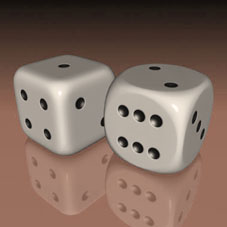In all regions of the world, regardless of culture or civilization, divinatory arts have always played an important role. In some countries (Greece for example) it is numerology that is most used to predict the future at some time, in others (France), it is perhaps tarot or encromancia. In Tibet, the local oracle, still called the Tibetan Oracle, is called upon. What is the Tibetan oracle and how is it practiced?
What can we understand about the Tibetan oracle?
The Tibetan Oracle is a divination technique that the Tibetan people use to understand certain existential phenomena. He is frequently consulted and has the distinction of being able to read the past, guess the present and predict the future. From its other name Mô or Mantra (which means in Sanskrit "weapon or tool of thought", it is based on the random draw of two of the six syllables that make up the Mantra Manjusri (AH RA PA STA NA DHIH). This divinatory technique is practiced by Buddhists (Buddha followers) and Hindus known for their Zen wisdom and precepts. She serves as a guide to consultants who, referring to her preaching, can better manage her life and know what to do in the face of each situation.
How does the Tibetan oracle work?
The Tibetan oracle works from the Manjusri Mantra. Indeed, the Mantra is composed of six syllables from which two are randomly drawn. Each syllable has a precise meaning. For example, the AH means space, the PA refers to peace, the TSA evokes destruction, and so on. The two syllables of the Mantra that are drawn are combined according to their order of draw and it is this combination that defines the prophecy. This is so because each combination of the Mantra (there are a total of 36) expresses a very specific situation according to the oracle. It is important to note that it is the consultant himself who draws the syllables. The draw is usually made with the dice (the six faces of which are marked by each syllable). Before throwing the dice, the consultant has the duty to repeat the Mantra 7 times. The practice of the Tibetan oracle requires concentration and a certain state of mind given. It is important to fill the void in one's mind, not to be plagued by anger and to forget any negative or destructive ideas. In addition, it would be ideal not to eat meat or fish the day before in order to be as less contaminated as possible spiritually. The aim is to make himself healthy and light to allow the monk to have a clear vision, because the practitioner must be very careful in interpreting the elements of answers provided by the oracle.
The interpretation of the Tibetan oracle
The Tibetan oracle has a total of 36 arcana that are interpreted on the basis of the following: the symbol (which explains the meaning of the combination), the global meaning (which is the answer given by a quotation), the foundations (which provide information about your vitality, family, property etc.), goals (express your personal aspirations), friends and resources (which inform about your next associations in love or business) , enemies (those you might have), visitors (their exact situations), health (potential illnesses), negative forces (information about the environment that would be favorable or unfavorable to you), spiritual practices (to avoid obstacles), the lost object (indicates whether it can be found or not), the completion of a project (if you have any) and other areas of your life.








